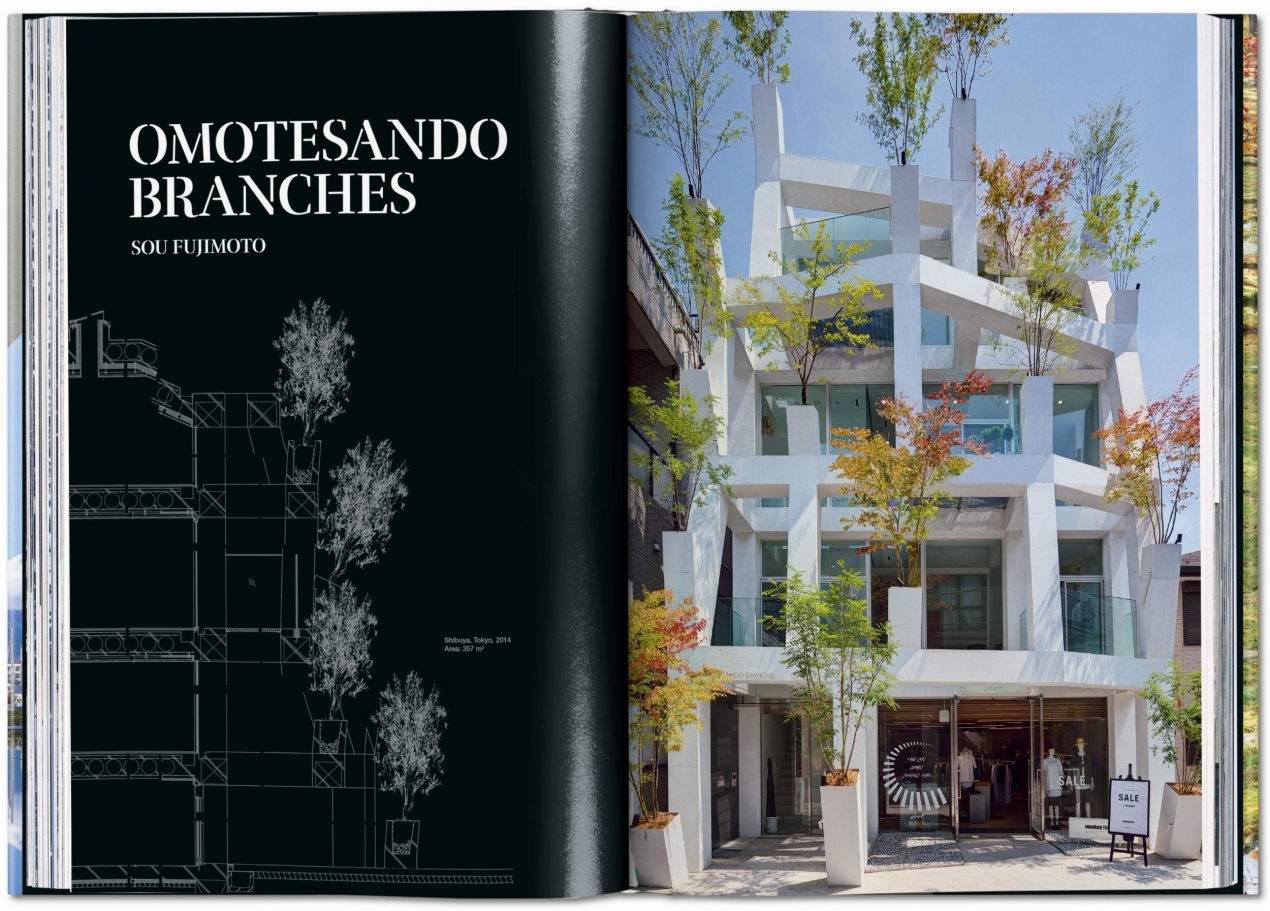1 / 8
XL
XL books are at least 34 cm (13.4 in.) high, with the exception of landscape-format titles
Contemporary Japanese Architecture
80
Enter your email address here and we will notify you when copies become available:
Ever since Osaka World Expo ’70 brought contemporary forms center stage, Japan has been a key player in global architecture. Presenting the Japanese art of building, this book reveals how the likes of Tadao Ando, SANAA, Shigeru Ban, Kengo Kuma, and Junya Ishigami are relinking past, present, and future—building greener and smarter than ever before.
Hardcover, 9.7 x 14.6 in., 8.31 lb, 448 pages
“The book hops around Japan and around the globe introducing readers to some of the more spectacular recent buildings from Japanese architects.”
“A bible of the most beautiful contemporary Japanese monuments.”
“…a comprehensive and richly illustrated survey of the field.”
“A survey of the most innovative projects from the country’s recent past.”
“Delving into ancient traditions and open to the most contemporary thought and technical capacities, the Japanese are a force to be reckoned within contemporary architecture.”
XL
XL books are at least 34 cm (13.4 in.) high, with the exception of landscape-format titles

Contemporary Japanese Architecture
80Modern by Tradition
A survey of Japan’s contemporary architecture scene
The contemporary architecture of Japan has long been among the most inventive in the world, recognized for sustainability and infinite creativity. No fewer than seven Japanese architects have won the Pritzker Prize.
Since Osaka World Expo ’70 brought contemporary forms center stage, Japan has been a key player in global architecture. With his intentionally limited vocabulary of geometric forms, Tadao Ando has since then put Japanese building on the world’s cultural map, establishing a bridge between East and West. In the wake of Ando’s mostly concrete buildings, figures like Kengo Kuma (Japan National Stadium intended for the Olympic Games), Shigeru Ban (Mount Fuji World Heritage Center), and Kazuyo Sejima (Kanazawa Museum of 21st Century Art of Contemporary Art) pioneered a more sustainable approach. Younger generations have successfully developed new directions in Japanese architecture that are in harmony with nature and connected to traditional building. Rather than planning on the drawing board, the architects presented in this collection stand out for their endless search for forms, truly reacting on their environment.
Presenting the latest in Japanese building, this book reveals how this unique creativity is a fruit of Japan’s very particular situation that includes high population density, a modern, efficient economy, a long history, and the continual risk of disasters in the form of earthquakes. Accepting ambiguity, as seen in the evanescent reflections of Sejima’s Kanazawa Museum, or constant change and the threat of catastrophe is a key to understanding what makes Japanese architecture different from that of Europe or America.
This XL-sized book highlights 39 architects and 55 exceptional projects by Japanese masters—from Tadao Ando’s Shanghai Poly Theater, Shigeru Ban’s concert hall La Seine Musical, SANAA’S Grace Farms, Fumihiko Maki’s 4 World Trade Center, to Takashi Suo’s much smaller sustainable dental clinic. Each project is introduced with photos, original floor plans and technical drawings, as well as insightful descriptions and brief biographies. An elaborate essay traces the country’s building scene from the Metabolists to today and shows how the interaction of past, present, and future has earned contemporary Japanese architecture worldwide recognition.
Since Osaka World Expo ’70 brought contemporary forms center stage, Japan has been a key player in global architecture. With his intentionally limited vocabulary of geometric forms, Tadao Ando has since then put Japanese building on the world’s cultural map, establishing a bridge between East and West. In the wake of Ando’s mostly concrete buildings, figures like Kengo Kuma (Japan National Stadium intended for the Olympic Games), Shigeru Ban (Mount Fuji World Heritage Center), and Kazuyo Sejima (Kanazawa Museum of 21st Century Art of Contemporary Art) pioneered a more sustainable approach. Younger generations have successfully developed new directions in Japanese architecture that are in harmony with nature and connected to traditional building. Rather than planning on the drawing board, the architects presented in this collection stand out for their endless search for forms, truly reacting on their environment.
Presenting the latest in Japanese building, this book reveals how this unique creativity is a fruit of Japan’s very particular situation that includes high population density, a modern, efficient economy, a long history, and the continual risk of disasters in the form of earthquakes. Accepting ambiguity, as seen in the evanescent reflections of Sejima’s Kanazawa Museum, or constant change and the threat of catastrophe is a key to understanding what makes Japanese architecture different from that of Europe or America.
This XL-sized book highlights 39 architects and 55 exceptional projects by Japanese masters—from Tadao Ando’s Shanghai Poly Theater, Shigeru Ban’s concert hall La Seine Musical, SANAA’S Grace Farms, Fumihiko Maki’s 4 World Trade Center, to Takashi Suo’s much smaller sustainable dental clinic. Each project is introduced with photos, original floor plans and technical drawings, as well as insightful descriptions and brief biographies. An elaborate essay traces the country’s building scene from the Metabolists to today and shows how the interaction of past, present, and future has earned contemporary Japanese architecture worldwide recognition.
The editor
Philip Jodidio studied art history and economics at Harvard and edited Connaissance des Arts for over 20 years. His TASCHEN books include the Homes for Our Time series and monographs on numerous major architects, including Norman Foster, Tadao Ando, Renzo Piano, Jean Nouvel, and Zaha Hadid.
Contemporary Japanese Architecture
Hardcover, 24.6 x 37.2 cm, 3.77 kg, 448 pagesISBN 978-3-8365-7510-2
Edition: Multilingual (English, French, German)Download product images here
5
Japan Alive
October 28, 2021
During the pandemic this book allows me to travel to my favorite country and see many places I have already been. Thoughtful and elegant.Einfach fantastisch!
October 28, 2021
Erwartungsgemäß sehr gute Fotos - und das eine ganze Menge. Mir gefällt auch, dass redaktionell ausführlich auf die Historie eingegangen wurde.







